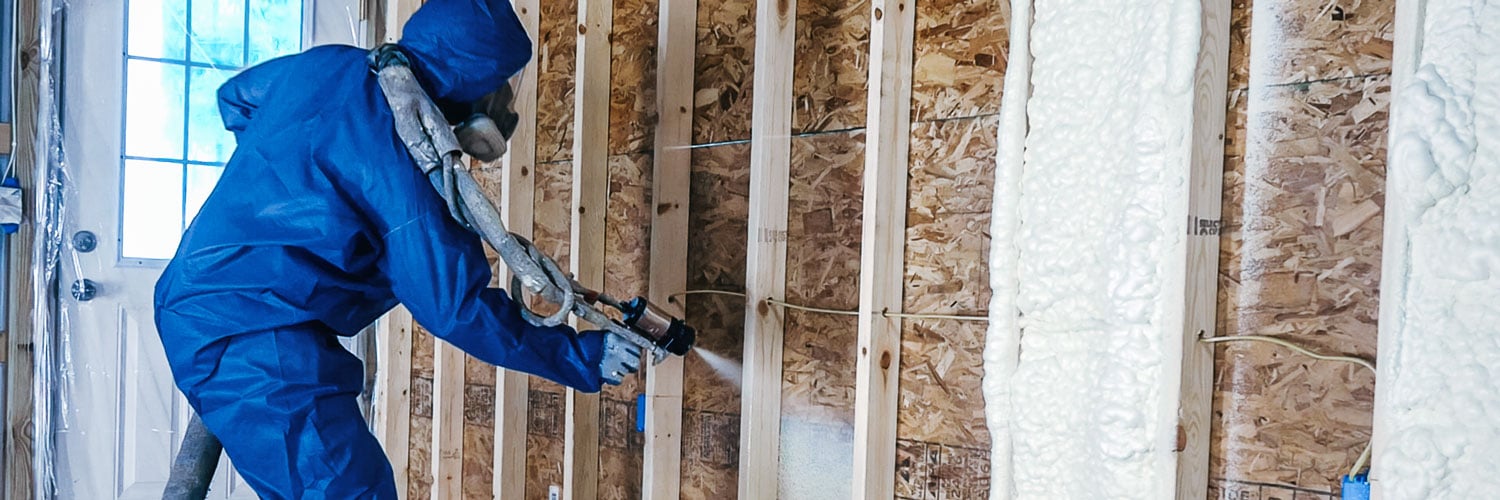Airtight House: Can Spray Foam Make My House Too Tight?
injection foam insulation | spray foam insulation | FAQ | existing home insulation


You know about the benefits of foam insulation for your home, but you still have questions about whether the material can create an airtight house that is too tight.
Your top concern is whether a house can be sealed too tightly, which could impact air quality and humidity. While very rare, this can happen when the home's building envelope is air sealed with foam insulation.
When building a new home, it will need to be insulated. The builder you hired will call in an HVAC (Heating, Ventilation, and Air Conditioning) contractor to perform a Manual J test.
This test will determine the HVAC sizing with foam insulation your new house needs.
That HVAC system will help keep your newly insulated home from being too tight. It will also ensure your home has the proper air exchange rate to have the appropriate air quality and a comfortable humidity level.
So, what happens if your house is too airtight? Let's talk about how to fix that.
What Happens if My Home is Sealed Too Much?
While the right-sized HVAC system for a newly built house avoids the issue, what about an existing home? Can a house be too airtight?
Your existing home can absolutely be too airtight after adding foam insulation. This happens because your HVAC system isn't matched up properly with your new insulation, so you might start noticing some issues with the air quality and moisture levels in your home.
So, what's the fix?
It's pretty straightforward. If your home is sealed tighter than a drum, just crack open a window or turn on the bathroom fan or kitchen hood every day. This simple act swaps out stale indoor air with fresh outdoor air -- you're literally giving your house a breath of fresh air.
But here's the scoop -- while spray foam insulation works wonders for energy efficiency, it's super rare for it to make your home too airtight. Still, whether we're talking brand-spanking newly built homes or charming older homes, keeping that indoor air fresh and clean is key.
How do we ensure this? Mechanical ventilation is the golden ticket here, according to the U.S. Department of Energy.
How Air Changes Per Hour Plays a Role
Now that you know how to fix a house that is too airtight, we have to talk a little bit about the science behind air changes per hour.
Air changes per hour, or ACH, is a measurement of how much air is coming in and going out of your home every hour. It's a big deal because it affects everything from the freshness of your air to the efficiency of your heating and cooling. If your home is too tight or not tight enough, it could lead to air that's either too stale or too leaky.
Now, why should you care about ACH? Well, building codes have rules about this, especially based on where you live. For example, in certain climates, your home shouldn't swap out its air more than a specific number of times an hour to keep things comfy without wasting energy.
Too many air changes? You might just be cooling the neighborhood instead of your living room. Not enough? Hello, musty air and unwanted moisture. Knowing your home's ACH can help you spot issues like these so you can keep your air just right.
How do you figure out your home's ACH? It involves a bit of math and a process called a blower door test. This helps measure how much air moves through your home. Then, with a simple formula, you can figure out if your home's air is changing enough to keep things fresh but not so much that you're tossing money out the window. And if things aren't quite right, sometimes the solution is as easy as stated above -- just run a fan to exchange some of that indoor air with fresh outdoor air.
Keep the balance, and you'll have a happier, healthier home.
Foam Insulation for Your Home
Now that you know that ventilation for airtight homes is the answer to the problem, you might have more questions about foam insulation.
We have the answers, along with a ton of great videos and other resources.
If you’d like to learn more about foam insulation in your home or pole barn, check out the Learning Center on our website.
Related Articles
What Should the Humidity Be in Your House?

